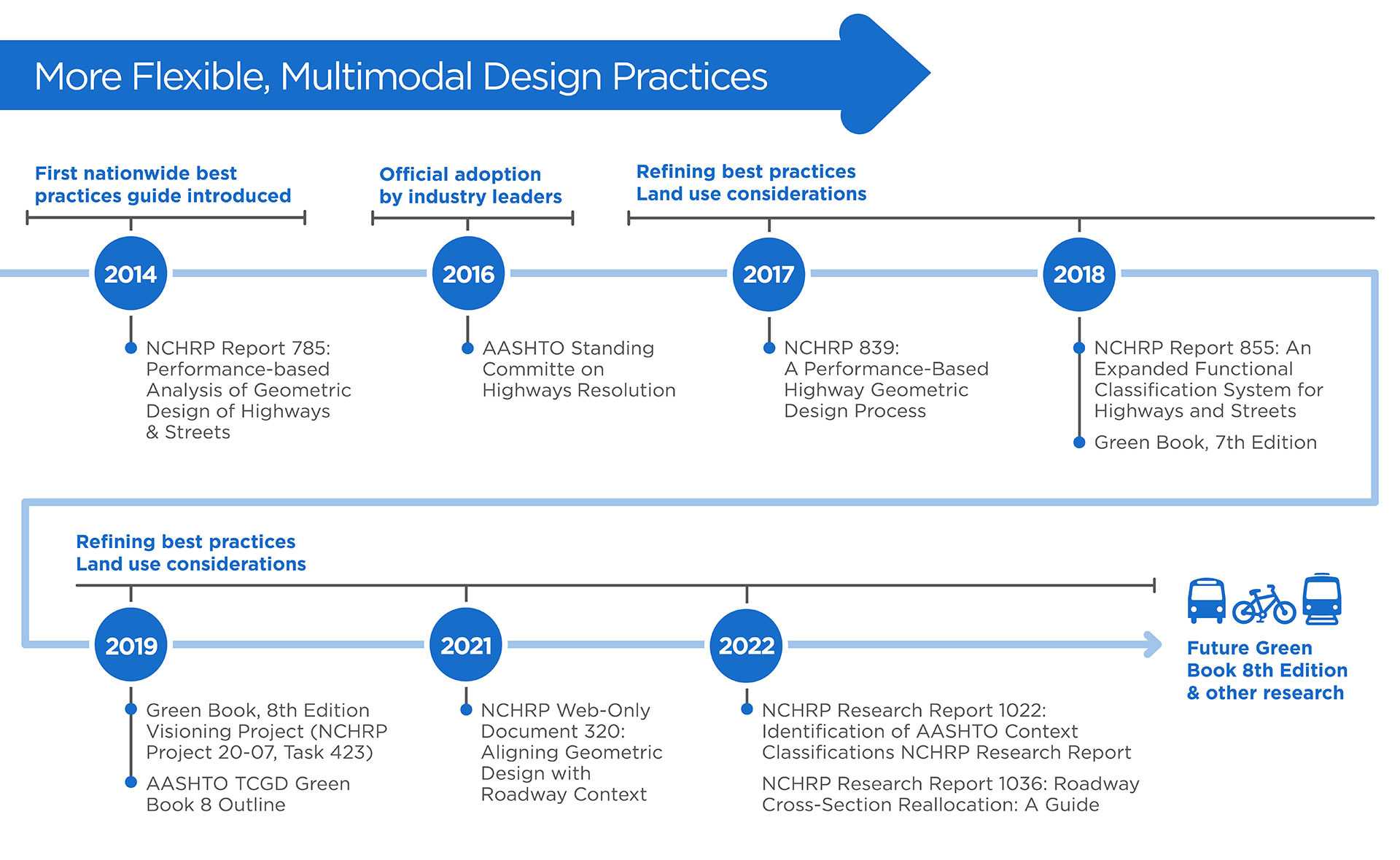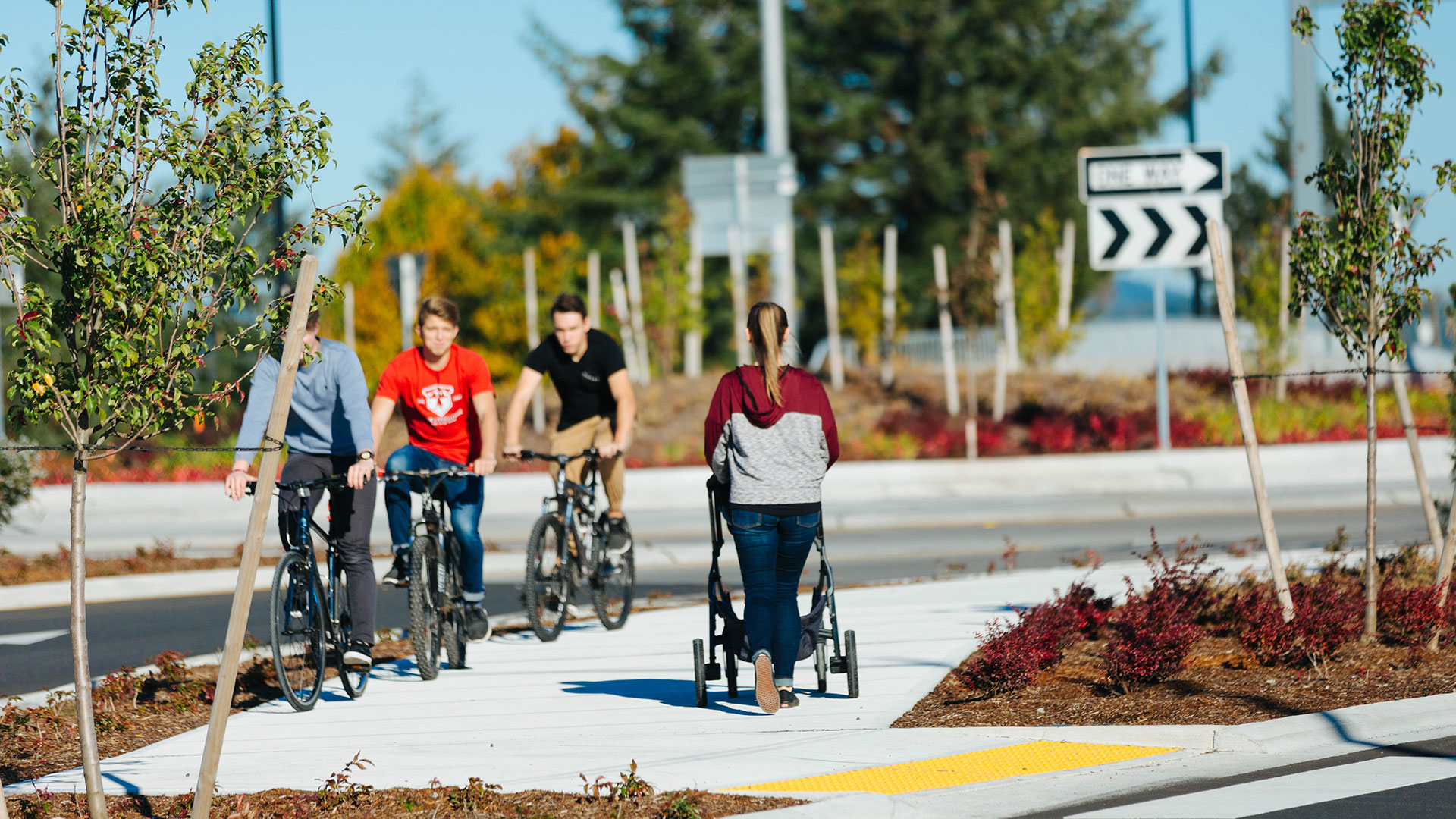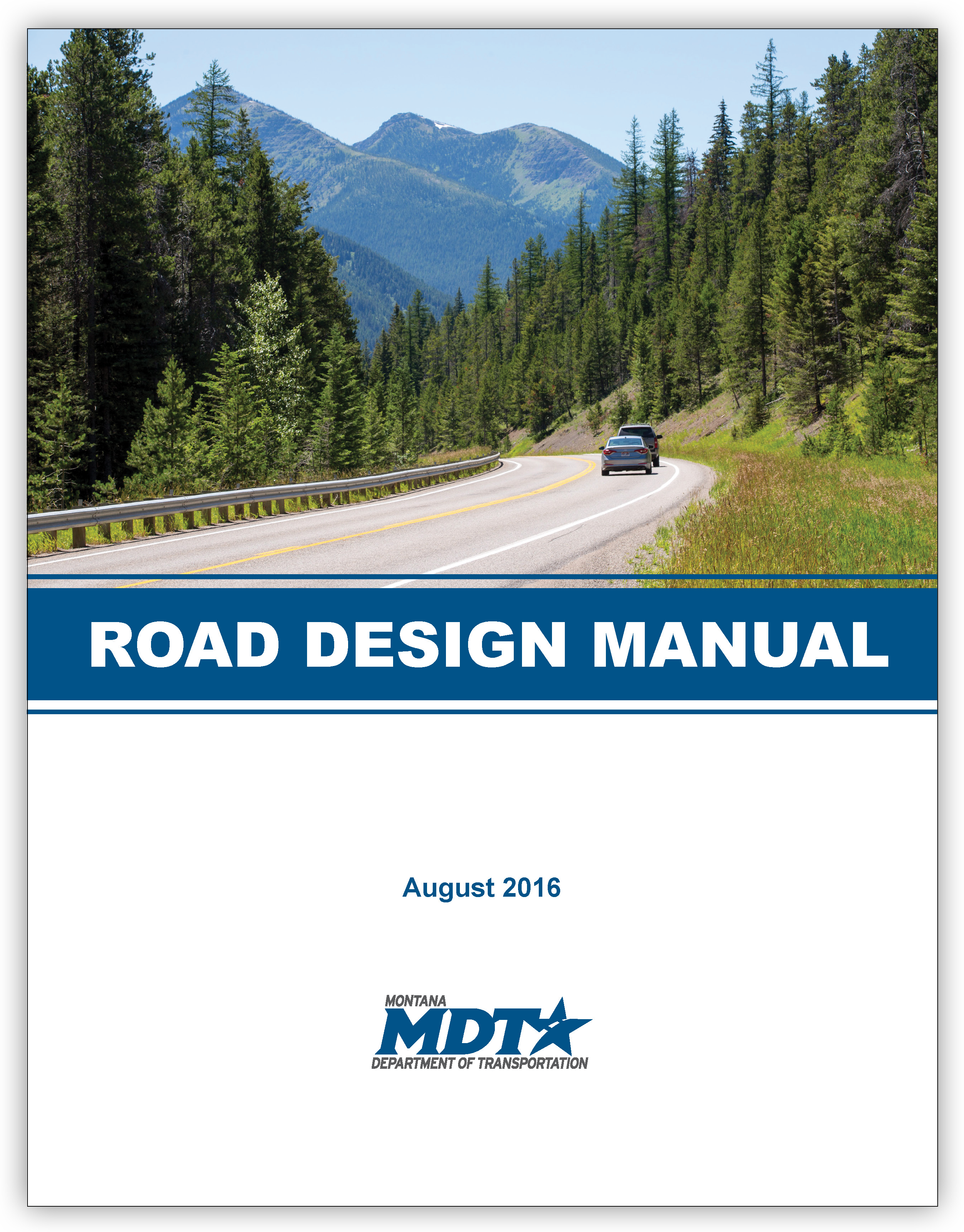May 28, 2024
Transportation is a rapidly changing industry. With new research coming out every year and the state of practice shifting to a more flexible approach to design, a systemic approach to safety, and an integration of new technologies, it’s important that state and local agencies keep their design manuals and other guidebooks in step with evolving best practices. But updating manuals can be a daunting effort, and some states haven’t touched theirs in ten or even 20 years.
The Industry is Moving
Historically, transportation engineers were trained to apply a consistent set of design standards to all projects. While consistency and accountability are good things, the challenge with such a rigid approach is it doesn’t consider the context that’s unique to every project—the type of environment, constraints, and history that make that challenge unique. The result can be a solution that doesn’t adequately address the need, or best serve the people who use that transportation system.
In contrast, performance-based, context-based design allows built projects to better reflect intended community outcomes. Instead of building transportation infrastructure based on coded standards that may not fit the context, context-based solutions acknowledge the way that transportation interacts with that particular community and environment.
There are many movements that have contributed to this shift (you can read more about the catalysts behind the shift here). In 2014, the first guide sharing national best practices for performance-based design was published as NCHRP Report 785: Performance-based Analysis of Geometric Design of Highways & Streets. In 2016, AASHTO’s Standing Committee on Highways (SCOH) released a resolution called “Direction on Flexibility in Design Standards” which tasked the Committee on Design to develop guidance that would ultimately feed into the AASHTO Green Book. The Green Book has been going through a comprehensive update and extensive visioning process for the 8th edition to move toward a performance-based approach in establishing roadway designs that are adaptive to their specific contexts.

In addition to this major shift toward context-sensitive design—which is not reflected in aging design manuals that adhere to rigid standards—there has been a significant amount of new research released in the past few years, including:
- NCHRP Web-Only Document 320: Aligning Geometric Design with Roadway Context
- NCHRP Research Report 1022: Context Classification Application: A Guide
- NCHRP Research Report 1036: Guide for Cross-Section Reallocation
- NCHRP Research Report 1043: Guide for Roundabouts
- 11th Edition of the Manual on Uniform Traffic Control Devices (MUTCD)
- Final Rule on Public Right-of-Way Accessibility Guidelines (PROWAG)
Just to name a few! Every year, groundbreaking documents get released that change the way our roadways are planned, designed and built.
As time passes, state and local design manuals and guidebooks that still include a rigid approach to design and exclude this new research fall further out of alignment with where the industry is today and where it’s heading next. Considering the influence of these guidebooks on the projects that fall within their jurisdictions, this is a concerning disconnect, particularly for states whose manuals have gone more than a decade without revision.
Of course, none of this is news to state DOTs and local agencies, who face the daunting task of updating their manuals to reflect a more flexible, context-based approach that also incorporates the latest national design guidance and best practices. The challenge is how to tackle such an effort.
Thankfully, there is more than one way to do it.

Updating your design manual can be a daunting task. Thankfully, there is more than one way to do it.
Route 1: Develop a Bridging Document
Some agencies might not be ready for a full manual rewrite. Rewriting a manual is a long and involved process, and many agencies are eager to implement new guidance sooner.
Bridging documents can provide immediate guidance and help agencies take incremental steps toward updating their manuals. For example, before the Oregon Department of Transportation (ODOT) was ready to undertake a full update of their highway design manual, a Kittelson team worked with them to create the Blueprint for Urban Design (BUD). The BUD was a near-term solution that established new, context-based criteria to be used when designing urban projects on the state system. It was put in practice right away and eventually informed the development of their 2024 Highway Design Manual.
Route 2: Rewrite Your Full Manual
As we mentioned, rewriting a manual is a much bigger effort, but it’s ultimately where every state needs to go—and the process can be manageable and systematic. We typically recommend a multi-phased approach to updating manuals:
1. Phase one is about understanding what you have now and what your needs are. This includes brainstorming, reviewing existing guidance and new research, conducting outreach, developing white papers, and creating an outline for the publication.
2. Phase two is where the content development takes place—an iterative process of drafting and reviewing. This phase is best tackled in bundles of chapters to keep the process organized.
3. When possible, we encourage a third phase: training and implementation of the finished manual. This can take different forms. For Metro’s Designing Livable Streets and Trails Guide, which was a planning document with designing principles, we held a one-day workshop. For the Tennessee Work Zone Design Manual, we conducted an all-day training at every region throughout the state. This step is important because the final product should be understood and ultimately used!
Tips for a Successful Rewrite
Here are a few of our most emphatic suggestions for agencies looking to undertake one of these two routes to bring their guidance up to current practices.
- Talk to other states who have gone through the process recently. This can be a great way to get inspiration and ideas. Peer exchanges are often available through national funding sources, so look for these opportunities and raise your hand for them!
- Identify internal champions who will be part of the project from brainstorming through implementation. It’s valuable to assemble a team from different departments to inform the process and champion the manual’s development.
- Stay informed on the latest research. Attend local meetings (like Institute of Transportation Engineers meetings), national meetings (like the Transportation Research Board Annual Meeting), and webinars on new topics to keep a pulse on how the industry is evolving.
- Know your resources. You have many excellent resources at your disposal! Two FHWA units in particular offer tremendous value to a state who might want to reach out for assistance: the local Division Office in their state, and the HQ and Resource Center (specifically, the Preconstruction Team in the Office of Infrastructure, and the Safety & Design Technical Services Team in the Resource Center). FHWA’s Safety page also includes many valuable resources.
Montana Road Design Manual Paves the Way in Performance-Based Design
For an example of how this can play out, let’s look at one of the first state-level road design manuals in the US to embrace performance-based design: the Montana Department of Transportation (MDT) Road Design Manual (RDM).
Prior to its 2016 update, the RDM was last updated in the 1990s. Of course, many design methodologies and standards had changed over that period. MDT recognized that the RDM needed to emphasize that design is more than just applying a standard from a table—it’s an understanding of tradeoffs, and of how design, safety, and operations interact.
 Kittelson and MDT worked collaboratively to update the RDM with national research and MDT design practices. Starting with a new table of contents, we prepared white papers on key road design topics for consideration and developed an annotated outline for the new manual. The information-gathering process in phase one included holding workshops with MDT staff across engineering disciplines to gather input and generate new material that reflected current design research, updated project development processes, and best practices for road design.
Kittelson and MDT worked collaboratively to update the RDM with national research and MDT design practices. Starting with a new table of contents, we prepared white papers on key road design topics for consideration and developed an annotated outline for the new manual. The information-gathering process in phase one included holding workshops with MDT staff across engineering disciplines to gather input and generate new material that reflected current design research, updated project development processes, and best practices for road design.
In developing the new manual, we incorporated a national perspective on performance-based design and other state-of-the-art elements of the design process. It was important to us to take time to understand MDT’s organizational structure and the interaction of its bureaus, departments, and sections to aid in the coordination and streamlining of our design approach.
From the annotated outline, the team developed the new RDM, building on existing chapters, incorporating nationally recognized research, and creating new chapters on multimodal and urban design considerations. The RDM became one of the first state-level road design manuals in the US to embrace performance-based design, providing engineers with the tools and guidance to apply standards in a context-sensitive manner. In 2017, the project won an American Council of Engineering Companies (ACEC) Engineering Excellence Award in Montana.
Since then, we’ve had the privilege of helping agencies from Oregon to Florida make critical updates to their guidebooks and manuals to stay in the game and ultimately, provide quality guidance on projects that will set up those projects to best serve their communities.
An Effort That Pays Off
Transportation is an industry that’s always moving—in more ways than one! While the task of updating a guidebook or manual may feel daunting, we’d argue that failing to do so is an even bigger challenge because of its tie to poor project outcomes. The good news is that you can take incremental steps to accomplish the goal.
Whether your next step is assembling new guidance in the form of a bridging document or beginning to undertake a full manual revamp, you are serving your staff and communities when you channel the new information and research that’s surfaced in our profession into the guidance your jurisdiction’s projects will follow.
